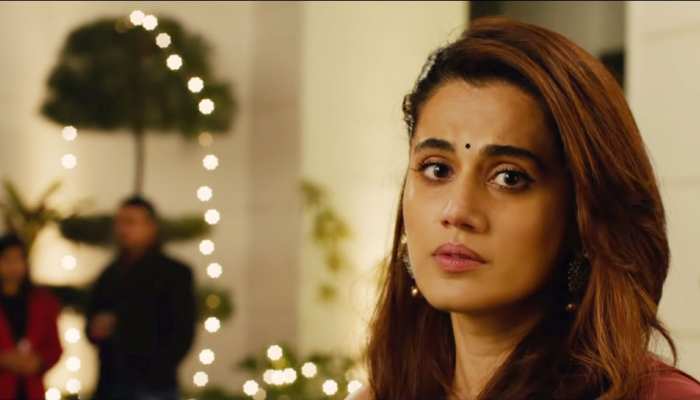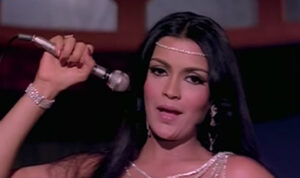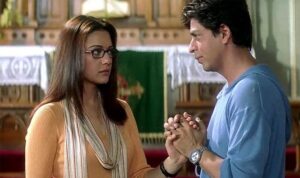Breaking the fourth wall in Bollywood

Taapsee Pannu, in the trailer of her film Thappad (2020), broke the fourth wall & addressed audience directly
Vikram Sabharwal slaps his wife Amrita at a party, owing to professional stress. Amrita is as shocked as the audience watching the film. She suddenly turns towards the screen and asks the audience whether they are waiting to watch the rest.
She then says that slapping is not “itni si baat” (a negligible affair) and urges the viewers to report the trailer on social media platforms to make it the most reported one. She adds that videos containing violence against women shouldn’t be encouraged.
This is how Bollywood actor Taapsee Pannu, in the trailer of her film Thappad (2020), broke the fourth wall and addressed the audience directly. Not just the slap followed by pin-drop-silence, what also surprised many audience was the actor’s direct question to those watching the trailer.
Karthik Tripathi, a Delhi-based filmmaker, says that breaking the fourth wall and interacting with the audience is important in order to break the monotony of a film, especially in films like Thappad, in which a call to action plays an important role.
“As an audience, we usually occupy the viewpoint of the camera, which would within the space of the film’s physical world be the ‘fourth wall’ that we never actually see. Breaking the fourth wall is one of those rarely employed cinematic techniques that instead of attempting to immerse viewers in the world that is being created, actively draws them out of it,” he adds.
What is the fourth wall?
Tripathi explains that in cinematic parlance, the phrase ‘breaking the fourth wall’ is often used by writers and critics. The concept refers to the technique where the actors in a film or a play interact directly with the audience. The term originated in theatres where fourth wall refers to an imaginary wall at the front of the stage that separates audience from the performers.
He goes on to say that there are many contemporary films and shows directed in various languages that use breaking fourth wall as a storytelling device. Films, such as Deadpool (2016) and The Wolf of Wall Street (2013), and shows, such as House of Cards (2013-2018), have made the technique popular.
Though popular in the Hollywood, in Indian cinema, especially in the Bollywood films, using this technique is still uncommon. “Even when directors break the fourth wall in Bollywood, they often remain very conscious that it might sound childish or like preaching to audience,” he says.
Breaking fourth wall in Bollywood films
Breaking the fourth wall, according to filmmaker Tripathi, can be done in two ways. “The first option is by addressing the audience directly, or by responding to something that happens among the audience,” he explains.
The other way, which he says is more popular in Bollywood, is by adding a number of references, inside jokes and social messages in films.
Films such as Om Shanti Om (2007), Johnny Gaddar (2007), Luck By Chance (2009) and Kal Ho Na Ho (2003) offer a treasure trove of references and inside jokes on Hindi films.
Tripathi goes on to say that one of his favourite instances of breaking the fourth wall in Bollywood is in Karan Johar directed Kal Ho Naa Ho. Different characters talk to the audience at various points in the film. Naina (Preity Zinta’s character) talks to the audience about her family and her problems. Later, other characters also get an opportunity to speak to the audience. When Aman (Shahrukh Khan) asks Naina when was the last time she smiled, all the other people tell audiences the last time they saw Naina smile. At a later stage, many characters in the film told audiences what their definition of love is. “All of these moments were done in a way that felt fresh at that time and remains memorable to this day,” says Tripathi.
“Films break the fourth wall in situations where characters talk about their own feelings directly to the audience, eliminating the need of a narrator,” he explains.
He refers to a more recent film, late Sushant Singh starrer – Shuddh Desi Romance (2013), which is a contemporary take on live-in and marital relationships. The three lead characters break the fourth wall by explaining their thought processes behind decisions that they make in the film.
The fourth wall on OTT platforms
Moving on to more recent works, he talks about the anthology film Lust Stories (2018) that released on Netflix. Director Anurag Kashyap’s segment in the film was about a woman named Kalindi who regularly broke the fourth wall. “Much more than the film’s story, it was Kalindi’s monologues that made the segment watchable. She talked about love, romanticism and selfishness by sharing her feelings with audience,” Tripathi explains.
He also refers to late Irrfan Khan starrer Qarib Qarib Singlle (2017). When character Jaya signs up on a dating website, Ab Tak Singlle, she breaks the fourth wall and directly speaks to the audience. In some other scenes in the film, Jaya does not speak but just looks into the camera directly to convey her feelings.
In another documentary released on Sony Liv platform, Sachin: A Billion Dreams (2017), a documentary-fiction film based on the life of Sachin Tendulkar, the fourth wall is broken by the cricketer himself where he directly addresses the audience, adding emotional touches to the film.
Offering a closure
Mukul Yadav, a professor of film studies at the University of Delhi, says that while breaking the fourth wall in between a film is uncommon, Bollywood has often used it to give a closure or end to the films in past, especially during 1990s to early 2000.
“In Kabhi Haan Kabhi Naa (1994), character Anthony Gomes talks to the audience just when the film is about to end. He tells the viewers to not worry about his friend Sunil who was left heartbroken after the girl whom he loves gets married to someone else. Anthony advises the audience that life is all about acceptance and rejection, and, like Sunil, they all should move on as well,” explains Yadav.
He further remembers that Aditya Chopra tried breaking the fourth wall in Dil To Pagal Hai (1997) where during the credits of the film, Rahul and Nisha, lead characters of the film, talk directly to the audience about their views on the existence of a soulmate.

Zeenat Aman looks straight at the audience watching the film in song Aap jaisa koyi from Qurbani (1980)
Another film studies professor from the University of Delhi, Ajay Arora, speaks of an interesting observation about the song Aap Jaisa Koi (Someone like you) from Qurbani (1980). Although this does not involve speaking to the audience, he says that actor Zeenat Aman’s gaze in the song is also a form of direct address to the audience.
He goes on to say that breaking the fourth wall has also been observed in other films, such as Race 3 (2018), Himmatwala (2013), Main Tera Hero (2014), Shaitan (2011), and Bazaar (2018) in recent years and there are many more films that audiences might have missed.
“As filmmaking continues to evolve with new methods of storytelling, some filmmakers have even started talking about breaking the fifth wall and letting the audience become a part of the movies. The future of the films is indeed going to be super interesting,” he says.











